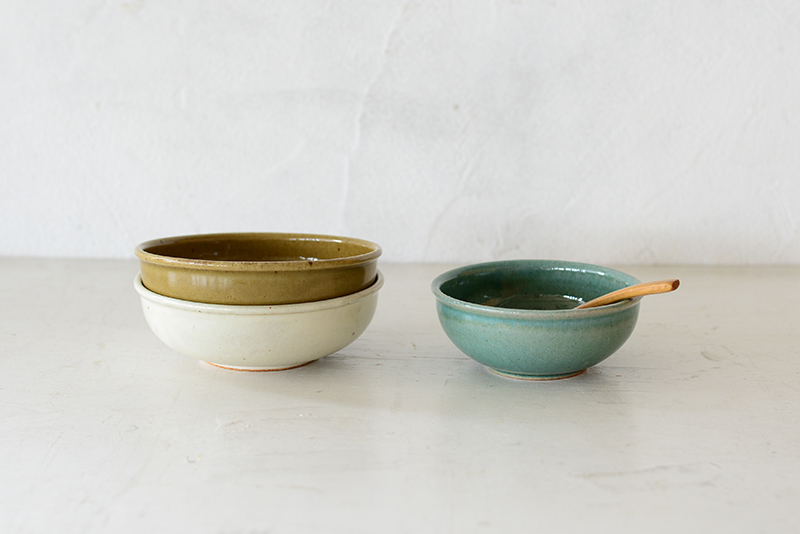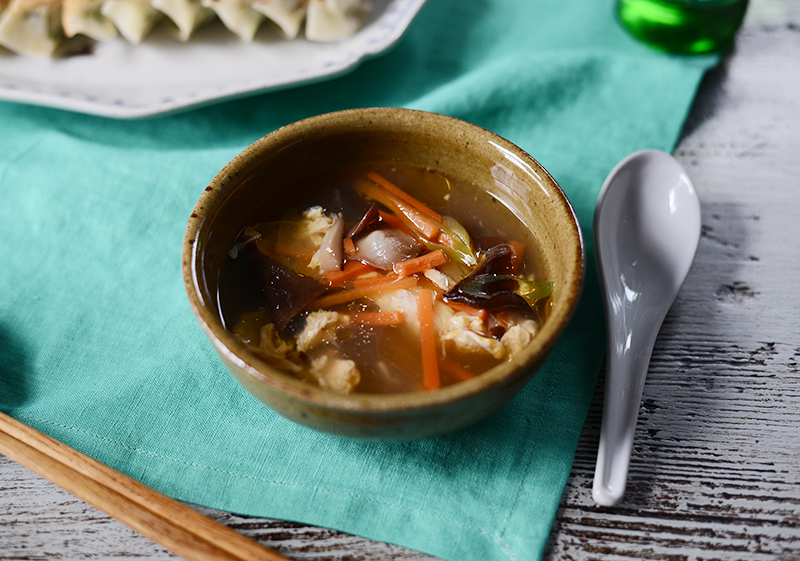当日発送について
以下の条件に該当するご注文を当日配送いたします。
・平日(営業日)の12時までにご注文が完了。
・ご注文いただいた商品の在庫がすべてある場合。
・お支払方法がクレジットカード決済か代引きの場合。
※受注状況や確認事項の有無などにより、お時間をいただく場合がございます。
※12時以降のご注文は最短で発送いたします。
定休日のご案内
土日祝日、お盆、年末年始などは出荷業務をお休みいたします。
Now Loading...
以下の条件に該当するご注文を当日配送いたします。
・平日(営業日)の12時までにご注文が完了。
・ご注文いただいた商品の在庫がすべてある場合。
・お支払方法がクレジットカード決済か代引きの場合。
※受注状況や確認事項の有無などにより、お時間をいただく場合がございます。
※12時以降のご注文は最短で発送いたします。
土日祝日、お盆、年末年始などは出荷業務をお休みいたします。

家庭で気軽に日常的に使いたい、温かい気持ちになるボウル。
秋冬に使いたくなる、土と釉薬の風合い豊かなとんすいを提案したいという思いから、企画をスタートしました。

鍋をメインにするか、他のおかずもたくさん作って鍋料理もおかずの一つとして扱うか。
鍋料理をどれくらい装うかで、使いたいとんすいのサイズが変わってきます。


ガルブはそんな要望に応えられる展開。
高さはほぼ同じで、口径の異なる2サイズです。
好みに合わせてお選びいただけます。
大きい方の160ボウルは、具沢山な鍋料理をメインに食べたい時にぴったりな大きめサイズ。

他にもシチューやロールキャベツ、おでん、煮物やサラダの中鉢としてもおすすめ。
小さい方の135ボウルは、鍋料理の他にもおかずがいろいろあるとき用の小さめサイズ。


スープやポテトサラダなどの副菜の鉢。
アイスやあんみつなどのスイーツづかいも似合います。


手にすっと馴染む丸みのあるフォルムと、リムのぽってりとした厚みのある玉縁が素朴で温かい印象。
薄づくりの器は使う時に特に気を使いますが、ガルブは縁に厚みがしっかりあるので日常で気軽に使いたくなる安心感があります。

重ねるとこんな感じ。
シンプルな形状は素材の良さをより際立たせ、生かしてくれます。

パッと見てわかる土の粗さ、土由来の鉄粉の出方、釉薬のタレや焦げなどの変化。
素材は焼き物ならではの面白さが十分に現れるものを選びました。
乳白はこってりとした濃厚な雰囲気の生成色と、
縁などに火の加減で現れる茶色い焦げ目の組み合わせがなんだか美味しそうな色合いです。
トルコは釉薬のタレが出やすく、また溜まった釉薬の濃い部分の色味の味わいが素敵な釉薬です。
少し落ち着いた青緑色の発色が和食にとても似合います。
山吹は土の質感や鉄粉の具合などが良くわかる明るさと透明感のある釉薬で、
食卓にも馴染みやすく、素朴で冬の温かい気持ちでお鍋を食べたい時にぴったりな色味です。

素材もフォルムもほっこりと温かい気持ちになるガルブ。
ぜひいつもの食事に仲間入りさせてみてください。